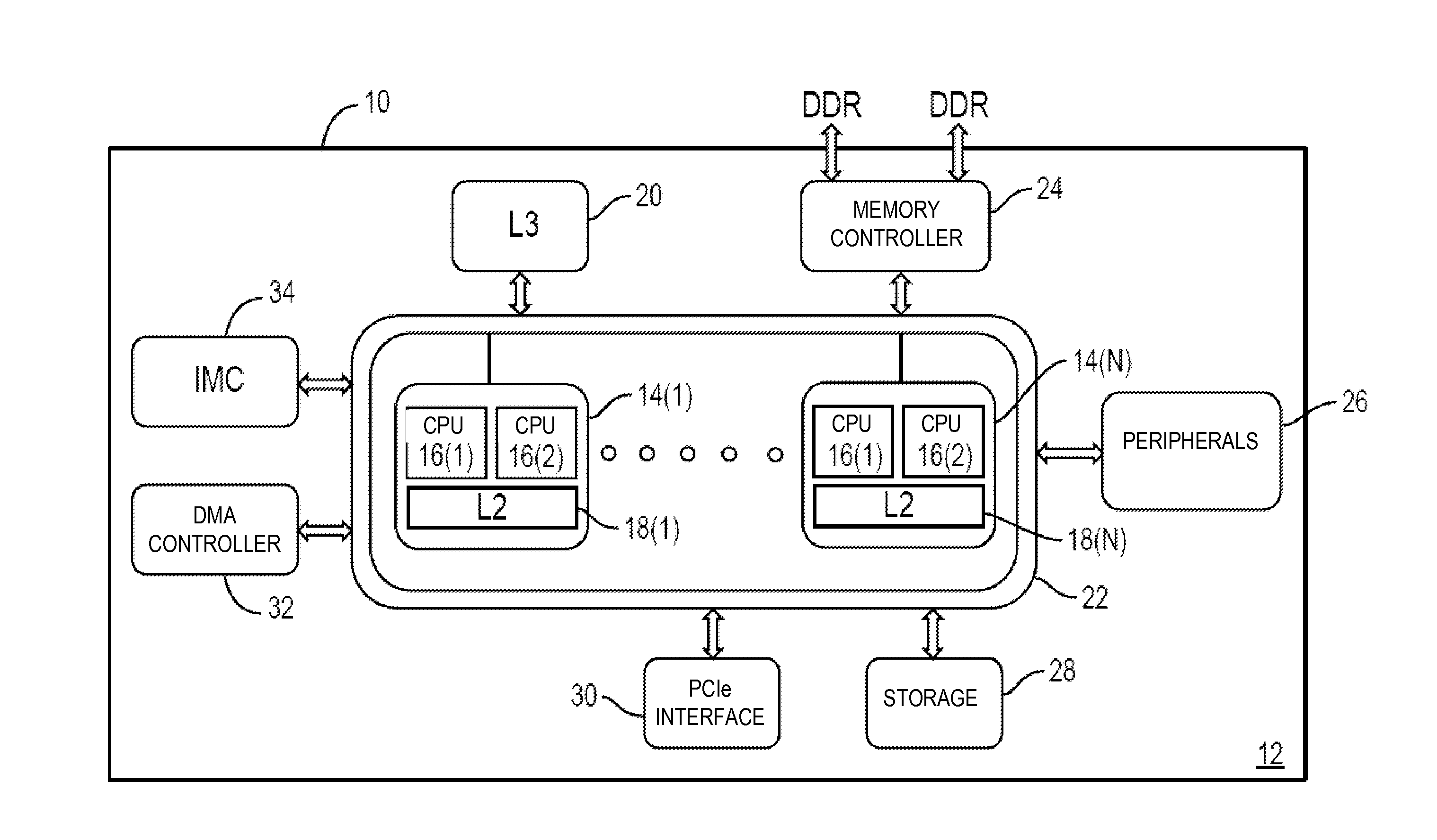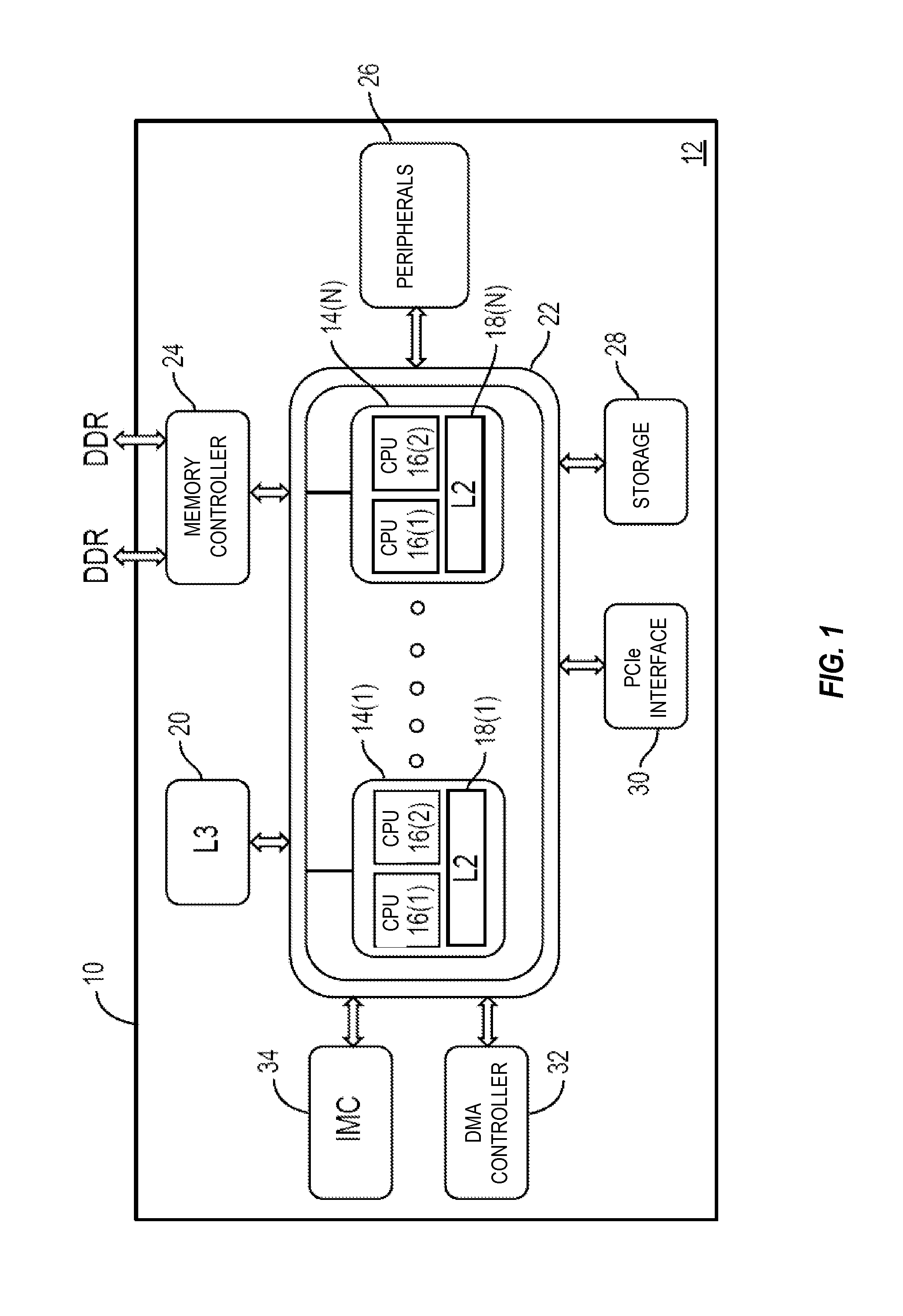PROVIDING MEMORY BANDWIDTH COMPRESSION USING BACK-TO-BACK READ OPERATIONS BY COMPRESSED MEMORY CONTROLLERS (CMCs) IN A CENTRAL PROCESSING UNIT (CPU)-BASED SYSTEM
a memory controller and memory bandwidth technology, applied in the field of memory controllers in computer memory systems, can solve the problems of consuming additional memory bandwidth, using data compression, and increasing memory access latency, so as to reduce memory access latency, increase physical memory size, and effectively increase the memory bandwidth of the cpu-based system
- Summary
- Abstract
- Description
- Claims
- Application Information
AI Technical Summary
Benefits of technology
Problems solved by technology
Method used
Image
Examples
Embodiment Construction
[0027]With reference now to the drawing figures, several exemplary aspects of the present disclosure are described. The word “exemplary” is used herein to mean “serving as an example, instance, or illustration.” Any aspect described herein as “exemplary” is not necessarily to be construed as preferred or advantageous over other aspects.
[0028]Aspects disclosed herein include providing memory bandwidth compression using back-to-back read operations by compressed memory controllers (CMCs) in a central processing unit (CPU)-based system. In this regard, in some aspects, a CMC is configured to provide memory bandwidth compression for memory read requests and / or memory write requests. According to some aspects, upon receiving a memory read request to a physical address in a system memory, the CMC may read a compression indicator (CI) for the physical address from error correcting code (ECC) bits of a first memory block in a memory line associated with the physical address in the system me...
PUM
 Login to View More
Login to View More Abstract
Description
Claims
Application Information
 Login to View More
Login to View More - R&D
- Intellectual Property
- Life Sciences
- Materials
- Tech Scout
- Unparalleled Data Quality
- Higher Quality Content
- 60% Fewer Hallucinations
Browse by: Latest US Patents, China's latest patents, Technical Efficacy Thesaurus, Application Domain, Technology Topic, Popular Technical Reports.
© 2025 PatSnap. All rights reserved.Legal|Privacy policy|Modern Slavery Act Transparency Statement|Sitemap|About US| Contact US: help@patsnap.com



